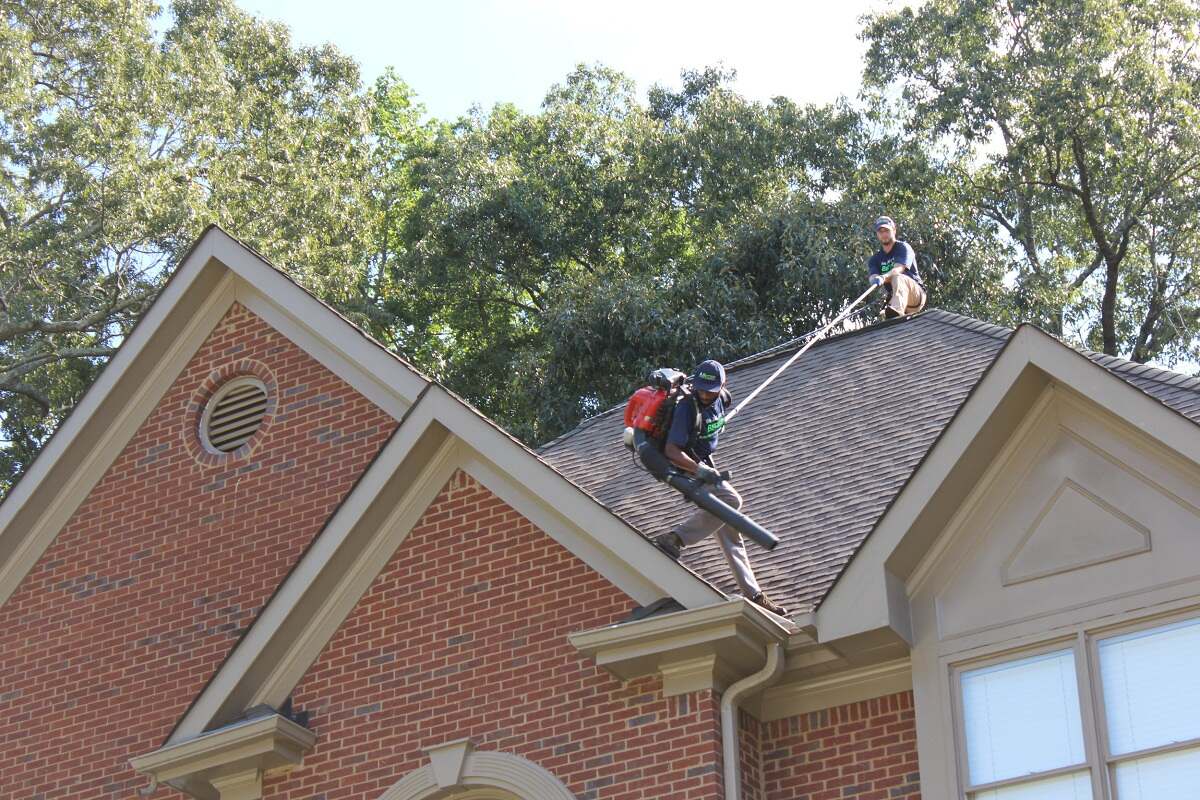

Articles
How To Clean Gutters On A Steep Roof
Modified: April 22, 2024
Learn effective techniques for cleaning gutters on a steep roof with our informative articles. Ensure your gutters stay clean and efficient for optimal drainage.
(Many of the links in this article redirect to a specific reviewed product. Your purchase of these products through affiliate links helps to generate commission for Storables.com, at no extra cost. Learn more)
Introduction
When it comes to maintaining the integrity of your home, one important aspect that often gets overlooked is the regular cleaning of gutters. Gutters play a crucial role in directing rainwater away from your roof and foundation, preventing water damage and potential structural issues.
However, cleaning gutters can be a challenging and potentially risky task, especially if you have a steep roof. The combination of height and inclination increases the difficulty of accessing and maneuvering around the gutters. But fear not, because in this article, we will guide you through the process of cleaning gutters on a steep roof, ensuring that you can effectively maintain the functionality and appearance of your home.
Before we dive into the specifics of gutter cleaning, it’s important to understand why this task is so crucial. Over time, gutters can accumulate debris, such as leaves, twigs, and dirt. This debris can clog the gutters, obstructing the flow of water. When the gutters are clogged, rainwater cannot properly drain away from your roof, leading to potential water damage, leaks, and even mold growth. By regularly cleaning your gutters, you can prevent these issues and ensure that your home remains protected.
Additionally, cleaning gutters on a steep roof poses its own unique set of challenges. Steep roofs have a higher slope, making it difficult to access the gutters safely. This article will not only provide you with step-by-step instructions on how to clean gutters on a steep roof, but also guide you through the safety precautions and necessary tools you’ll need to carry out the task effectively.
So, whether you’re a seasoned DIY enthusiast or a homeowner looking to save some money by tackling this task yourself, keep reading to learn the ins and outs of cleaning gutters on a steep roof.
Key Takeaways:
- Regularly cleaning gutters on a steep roof is crucial for preventing water damage, protecting your home’s foundation, and maintaining its overall integrity. Safety measures, proper tools, and thorough inspections are essential for effective gutter maintenance.
- After cleaning gutters, maintaining a regular schedule for cleanings, monitoring water flow, and investing in professional assistance when needed are key to ensuring clean and functional gutters. Proactive care and attention to detail can save you from potential headaches and costly repairs.
Read more: How To Work On A Steep Roof
Understanding the Importance of Cleaning Gutters
When it comes to home maintenance, cleaning gutters often falls down the priority list. However, neglecting this task can lead to serious consequences for your home. Understanding the importance of cleaning gutters will motivate you to make it a regular part of your maintenance routine.
First and foremost, clean gutters are crucial for the proper drainage of rainwater. Gutters are designed to collect rainwater from your roof and redirect it away from your home’s foundation. If the gutters are clogged with debris, the water cannot flow freely, causing it to overflow or even seep into the foundation. This can lead to basement flooding, foundation cracks, and other moisture-related issues. By cleaning your gutters, you ensure that rainwater is directed away from your home, protecting its structural integrity.
Clogged gutters can also contribute to roof damage. When gutters are full of leaves, twigs, and other debris, they can become heavy, putting pressure on the roof. Over time, this extra weight can cause the gutters to pull away from the roofline, leading to sagging and potential damage. Additionally, the stagnant water in clogged gutters can seep into the roof, causing rot, mold, and other issues. By cleaning your gutters, you help prevent these problems and extend the lifespan of your roof.
In addition to protecting your home, cleaning gutters can save you money in the long run. If water damage occurs due to clogged gutters, you may be facing costly repairs. Basement flooding, foundation repairs, and roof damage can add up to significant expenses. By investing a little time and effort in regular gutter cleaning, you can avoid these costly repairs and keep your home in excellent condition.
Furthermore, clean gutters are essential for maintaining the aesthetic appeal of your home. Clogged gutters can overflow, causing dirty water to drip down the exterior walls. This can leave unsightly stains and damage the siding of your home. Keeping your gutters clean not only promotes proper drainage but also enhances the overall appearance of your property.
Now that you understand the importance of cleaning gutters, it’s time to delve into the specifics of performing this task on a steep roof. In the next section, we’ll discuss the safety risks associated with steep roofs and how to mitigate them when cleaning your gutters.
Assessing the Safety Risks of a Steep Roof
Cleaning gutters on a steep roof can be a challenging and potentially hazardous task. Before you begin, it’s important to assess the safety risks associated with working on a steep roof and take necessary precautions to protect yourself. Understanding these risks will help ensure that you can complete the gutter cleaning process safely and effectively.
One of the primary risks of working on a steep roof is the potential for falls. The steep angle of the roof increases the chances of slipping and losing balance. This can result in injuries, ranging from minor cuts and bruises to more serious fractures or even fatalities. It’s crucial to prioritize your safety and take appropriate measures to prevent accidents.
Here are some key steps to assess and mitigate the safety risks of a steep roof:
- Evaluate your physical condition: Before attempting to clean gutters on a steep roof, honestly assess your physical fitness and any existing health conditions. If you have a fear of heights or medical conditions that hinder your ability to balance or climb safely, it’s advisable to seek professional help or consider alternative methods of gutter cleaning.
- Use the proper equipment: Investing in the right safety equipment is crucial when working on a steep roof. A sturdy, non-slip ladder with adjustable legs is essential for maintaining stability and reaching the gutters safely. Additionally, consider using a safety harness and secure anchor points to prevent falls.
- Wear appropriate attire: Dressing appropriately for the task is essential for your safety. Wear non-slip shoes with good traction to minimize the risk of slipping on the roof’s surface. Additionally, opt for clothing that allows for easy movement and is weather-appropriate to ensure comfort and prevent distractions.
- Be mindful of weather conditions: Avoid cleaning gutters on a steep roof during adverse weather conditions, such as heavy rain, strong winds, or thunderstorms. These conditions can make the roof surface even more slippery and increase the risk of accidents.
- Work with a partner: Having someone else present while you clean gutters on a steep roof can provide an extra level of safety. They can assist you by holding the ladder, passing tools, or providing help in case of an emergency.
- Take breaks and stay hydrated: Working on a steep roof can be physically demanding. Remember to take regular breaks and stay hydrated to avoid fatigue, which can impair your judgment and increase the risk of accidents.
By carefully assessing and addressing the safety risks associated with a steep roof, you can minimize the chances of accidents and ensure a safer gutter cleaning experience. In the next section, we will discuss the necessary tools and equipment you’ll need to effectively clean your gutters on a steep roof.
Gathering the Necessary Tools and Equipment
Before you can begin cleaning gutters on a steep roof, it’s important to gather all the necessary tools and equipment. Having the right tools on hand will streamline the gutter cleaning process and ensure that you can effectively remove debris and restore proper drainage. Here is a list of essential tools and equipment you’ll need:
- Ladder: A sturdy ladder is an absolute must for accessing the gutters on your steep roof. Look for a ladder that is tall enough to reach the desired height and has adjustable legs to accommodate the steep slope of the roof. Ensure that the ladder is in good condition, with no defects or damage that could compromise your safety.
- Gloves: Wearing gloves will protect your hands from debris and sharp edges while cleaning the gutters. Choose gloves that are durable, water-resistant, and provide good grip to handle the debris effectively.
- Gutter scoop or trowel: A gutter scoop or trowel is an essential tool for removing the debris from the gutters. Look for a scoop or trowel with a long handle to reach comfortably into the gutters without straining your arms.
- Bucket or garbage bag: You will need a bucket or a large garbage bag to collect the debris you remove from the gutters. Using a bag with a strap can make it easier to carry and manage while on the ladder.
- Garden hose: A garden hose with a spray nozzle attachment is necessary for flushing out the gutters once the debris is cleared. Ensure that the hose is long enough to reach the gutters from a water source.
- Safety harness and anchor points: If you feel more secure with an additional safety measure, consider using a safety harness. Make sure you have proper anchor points to attach the harness securely and prevent falls.
- Safety goggles: Protecting your eyes is important while cleaning gutters, as debris can easily get dislodged and splash into your face. Wear safety goggles to prevent any eye injuries.
- Protective clothing: It’s advisable to wear long-sleeved shirts and pants to protect your skin from scratches and scrapes. Additionally, consider wearing a hat to shield your head from the sun or falling debris.
- Ladder stabilizer or standoff: A ladder stabilizer or standoff can provide additional stability when working on a steep roof. It helps prevent the ladder from damaging the gutters and improves balance and safety.
Before you begin the gutter cleaning process, ensure that all your tools are in good condition and functioning properly. It’s also essential to follow proper safety guidelines and instructions when using the tools and equipment to minimize the risk of accidents.
Now that you have gathered all the necessary tools and equipment, it’s time to prepare for the gutter cleaning process itself. In the next section, we will discuss the important steps to take before starting the actual cleaning process on a steep roof.
Preparing for the Gutter Cleaning Process
Before you start the actual gutter cleaning process on a steep roof, it’s important to properly prepare for the task. Taking the time to prepare will ensure that you have everything you need and can approach the cleaning process efficiently and safely. Follow these steps to get ready:
- Check the weather: Before you begin, take a look at the weather forecast. It’s best to clean gutters on a dry day to ensure safety and allow manual debris removal without interference.
- Inform others: Let someone know that you’ll be cleaning gutters on a steep roof. This helps in case of an emergency or if you need assistance during the process.
- Create a plan: Visualize the areas that need cleaning and plan your route. Decide on the direction you’ll move along the gutters, starting from the downspout or any other strategic point. This will help you work in a systematic manner and avoid missing any sections.
- Clear the area: Remove any obstacles or clutter from the working area surrounding the house. This creates a safe and clear space for your ladder to rest against the structure securely.
- Trim overhanging branches: If there are any nearby tree branches that hang over the roof and gutters, trim them back before cleaning. This will prevent the branches from obstructing your access to the gutters and reduce the risk of accidents.
- Inspect the ladder: Thoroughly inspect the ladder for any defects or damages. Check the rungs, hinges, and locks to ensure that they are secure and in proper working condition.
- Secure the ladder: Set up the ladder on a solid and level surface. If the ground is uneven, use ladder levelers or blocks to stabilize it. Ensure that the ladder is in the correct angle, leaning against the roof structure, and not the gutters themselves.
- Attach ladder stabilizers or standoffs: If you have a ladder stabilizer or standoff, attach it to prevent any damage to the gutters and increase stability. These attachments create distance between the ladder and the roof, improving safety.
- Put on safety gear: Prioritize your safety by wearing the appropriate safety gear, including gloves, safety goggles, and any personal protective equipment (PPE) you have deemed necessary.
- Ensure adequate lighting: If you plan to clean your gutters in the evening or when daylight is minimal, set up sufficient lighting around the work area. Proper visibility is crucial to perform the task accurately and safely.
By adequately preparing for the gutter cleaning process, you establish a solid foundation for a successful and safe operation. Once you have completed the necessary preparations, it’s time to delve into the specific steps required to clean gutters on a steep roof. In the next section, we will discuss setting up safety measures to further ensure your well-being during the cleaning process.
Read more: How To Clean Gutters From The Roof
Setting up Safety Measures on a Steep Roof
When cleaning gutters on a steep roof, it’s crucial to prioritize safety to minimize the risk of accidents and injuries. Taking the necessary precautions and setting up safety measures will provide you with a secure working environment. Here are the key steps to follow:
- Wear a safety harness: Although it is not always necessary, wearing a safety harness can provide an extra level of protection. Attach the harness to a secure anchor point on the roof or another sturdy structure to prevent falls.
- Use ladder stabilizers: Attach ladder stabilizers or standoffs to your ladder to increase stability. These attachments help distribute the weight and prevent the ladder from resting directly on the gutters, reducing the risk of damage.
- Secure the ladder: Properly securing the ladder is crucial for your safety. Ensure that the ladder is leaning against the roof structure and not just the gutters. Use ladder levelers or blocks to keep the ladder stable on uneven ground.
- Ensure proper ladder positioning: Position the ladder at the correct angle to the roof. The base of the ladder should be placed one foot away from the wall for every four feet of vertical height. This ensures stability and prevents the ladder from sliding outwards.
- Have a spotter: Having someone else present while you work on a steep roof can provide an extra set of eyes and hands. They can hold the ladder, pass tools, and provide assistance if needed.
- Use non-slip shoes: Opt for non-slip shoes with good traction to avoid slipping on the roof surface. This will increase your stability and reduce the risk of accidents.
- Be cautious of debris: While cleaning the gutters, be mindful of the debris that may be present. Loose debris can be slippery, so tread carefully and avoid stepping on or kicking debris, as it may cause you to lose balance.
- Maintain three-point contact: As you move along the roof, always maintain three points of contact with the ladder or roof surface. This means having both feet and at least one hand firmly planted on the ladder or roof at all times.
- Stay clear of power lines: Take note of any nearby power lines and ensure that you maintain a safe distance throughout the cleaning process. Contact with power lines can be extremely dangerous and potentially life-threatening.
- Never overreach: Stretching or overreaching while on the ladder can throw off your balance and increase the risk of falling. It’s important to reposition the ladder as needed to ensure that you can comfortably reach the gutters.
Remember, safety should always be your top priority when working on a steep roof. If you are ever unsure about your ability to safely clean the gutters, it is always recommended to seek professional help. By implementing these safety measures, you can reduce the risk of accidents and injuries, allowing you to confidently and securely clean your gutters on a steep roof.
Now that you have set up the necessary safety measures, it’s time to dive into the process of cleaning the gutters on your steep roof. In the next section, we will discuss the steps for starting the clearing process from the downspout.
Use a sturdy ladder and a safety harness when cleaning gutters on a steep roof. Consider using a gutter cleaning tool or hiring a professional for safety.
Starting the Clearing Process from the Downspout
When cleaning gutters on a steep roof, it’s important to start the clearing process from the downspout. This ensures that any debris or blockages are removed from the main drainage channel, allowing for proper water flow. Follow these steps to effectively clear the gutters starting from the downspout:
- Position the ladder: Place the ladder securely near the downspout, ensuring that it is stable on the roof and properly leaning against the structure.
- Inspect the downspout: Before you begin clearing the gutters, inspect the downspout for any visible blockages. This could include leaves, twigs, or other debris that may be causing a restricted flow of water.
- Remove downspout blockages: Use a gloved hand or a small garden trowel to remove any visible blockages within the downspout. Gently scoop out the debris and place it in your bucket or garbage bag for disposal later.
- Clear the gutters: Once the downspout is clear, move along the gutters from the downspout, removing any debris that you come across. Use your gutter scoop or trowel to scoop out leaves, dirt, or other debris. Place the debris in your bucket or bag as you go along.
- Work in a systematic manner: Move along the gutters in a methodical way, clearing the debris in a systematic order. This will help ensure that you remove all the debris and cover every section of the gutter.
- Be mindful of clogged sections: Pay attention to any sections of the gutter that may be particularly clogged or require extra attention. These areas may be heavily packed with debris and require additional scooping or clearing.
- Check for loose gutter spikes or hangers: As you clear the gutters, keep an eye out for any loose or damaged gutter spikes or hangers. If you find any, tighten or replace them as necessary to ensure that the gutters are securely attached to the roofline.
As you clean the gutters, be cautious of your balance and footing on the ladder. Always maintain three points of contact with the ladder or roof surface. Take your time and focus on each section of the gutter, ensuring that you clear away as much debris as possible.
Remember, safety should always be a priority. If you encounter any challenges or feel unsafe at any point, consider seeking professional assistance. Cleaning gutters on a steep roof can be physically demanding and potentially risky, so it’s important to take breaks when needed and stay hydrated throughout the process.
Once you have cleared the gutters starting from the downspout, it’s time to move on to the next step: removing debris and leaves from the gutters. We will discuss this process in detail in the next section.
Removing Debris and Leaves from the Gutters
After starting the clearing process from the downspout, the next step in cleaning gutters on a steep roof is to remove the accumulated debris and leaves. This ensures that the gutters are free from obstructions, allowing rainwater to flow smoothly and preventing potential water damage to your home. Follow these steps to effectively remove debris and leaves from the gutters:
- Position the ladder: Move the ladder to the next section of the gutter that needs attention. Make sure it is stable on the roof and leaning against the structure.
- Inspect the gutter sections: Before removing debris and leaves, inspect each gutter section for any deposits or blockages. Look for accumulated leaves, twigs, dirt, or any other matter that may be impeding the water flow.
- Use a gutter scoop or trowel: With your gloved hand or a gutter scoop/trowel, carefully remove the debris from the gutter. Start from one end of the section and work your way to the other end. Place the debris into your bucket or garbage bag for disposal later.
- Clear congested areas: Pay special attention to areas where debris may be particularly congested. These areas might require more thorough cleaning and multiple passes to ensure they are fully cleared.
- Check for heavy or stubborn debris: Some debris, especially damp leaves or compacted dirt, may be harder to remove. Use your gutter scoop or trowel to break up and dislodge any stubborn debris before scooping it out.
- Inspect the gutter joints: While removing debris, inspect the gutter joints for any signs of damage or loose connections. Tighten any loose joints or replace damaged sections as needed to ensure the gutters are securely attached and leak-free.
- Dispose of the debris: Empty the contents of your bucket or garbage bag into yard waste containers or compost bins. Properly dispose of the debris according to local waste management guidelines.
As you clear the gutters, be careful not to apply excessive force that might damage the gutter system or dislodge gutter spikes. Take your time and work methodically through each gutter section, ensuring all debris and leaves are removed.
Remember to maintain proper balance and footing on the ladder throughout the process. Always prioritize your safety and never overreach, as it can compromise your balance and stability on the ladder. Take breaks when needed and stay hydrated to avoid fatigue.
Once you have effectively removed the debris and leaves from the gutters, it’s time to move on to the next step: flushing the gutters to ensure proper drainage. We will discuss this process in detail in the next section.
Flushing the Gutters to Ensure Proper Drainage
After removing debris and leaves from the gutters on a steep roof, the next crucial step is to flush the gutters to ensure proper drainage. Flushing helps remove any remaining small particles or dirt that may be obstructing the water flow. Follow these steps to effectively flush the gutters:
- Position the ladder: Move the ladder to the next section of the gutter that needs to be flushed. Ensure that it is securely positioned on the roof and leaning against the structure.
- Attach your garden hose: Connect your garden hose to a water source. Extend the hose to reach the gutters, making sure it is long enough to access all gutter sections.
- Use a high-pressure nozzle: Attach a high-pressure spray nozzle to the end of the garden hose. This will help create a strong and focused stream of water to effectively flush the gutters.
- Start from the downspout: Begin the flushing process from the downspout, working your way along the entire length of the gutters. Direct the high-pressure stream of water towards the downspout, ensuring it flows freely.
- Sweep away remaining debris: Use your hand or a small brush to sweep away any remaining debris or dirt that gets dislodged by the high-pressure water. This ensures that the debris is completely cleared from the gutters.
- Check for proper water flow: As you flush the gutters section by section, keep an eye on the water flow. Ensure that water is flowing smoothly and freely through the gutters and downspouts, without any blockages or overflowing.
- Inspect the downspout exit point: Once you reach the end of the gutters, check the downspout exit point. Ensure that water is draining away from the foundation of your home without any obstructions.
- Adjust water pressure if needed: If the water pressure is too high and causing damage to the gutters or downspout, adjust it to a lower setting. The goal is to flush away debris without causing any harm to the gutter system.
While flushing the gutters, be careful with the high-pressure water stream. Avoid directing it towards yourself or others, and always be aware of your surroundings. Take breaks if needed and stay mindful of the ladder’s stability.
Flushing the gutters is essential to ensuring proper water drainage and preventing any further obstructions or buildup. By taking this step, you can have the confidence that your gutters are clear and ready to protect your home from water damage.
Now that you have successfully flushed the gutters, it’s time to move on to the next step: inspecting the gutters for any damage or issues. We will discuss this process in detail in the next section.
Read more: How To Climb A Steep Roof
Inspecting the Gutters for any Damage or Issues
After flushing the gutters on a steep roof, it’s important to perform a thorough inspection to identify any signs of damage or issues. Regularly inspecting the gutters allows you to address problems early on and prevent further damage. Follow these steps to effectively inspect the gutters:
- Position the ladder: Move the ladder to access different sections of the gutters for a closer inspection. Make sure it is securely positioned on the roof and leaning against the structure.
- Check the gutters for sagging: Inspect the gutters to see if they are sagging or pulling away from the roofline. Sagging gutters may indicate that the fasteners or brackets holding them in place need to be tightened or replaced.
- Look for cracks or holes: Examine the gutters for any cracks or holes. These can lead to leaks and water damage. If you spot any damage, consider repairing or replacing the affected gutter section.
- Check for loose or missing screws: Inspect the gutter screws or spikes to ensure they are properly secured. Tighten any loose screws and replace any missing ones to ensure that the gutters are firmly attached to the roofline.
- Inspect the downspout: Examine the downspout for any signs of damage or blockages. Ensure that it is securely attached and that water can flow freely through it without any obstructions.
- Look for signs of rust or corrosion: Check for any signs of rust or corrosion on the gutters. Rust can weaken the gutter system and lead to leaks. If you notice any rust, consider applying a protective coating or replacing the affected sections.
- Inspect the fascia board: Examine the fascia board behind the gutters for any signs of rot or water damage. If you detect any issues, address them promptly to prevent further damage to the roof and underlying structure.
- Ensure proper drainage: Finally, make sure that water is flowing freely through the gutters and downspouts. Check that the water is directed away from the foundation of your home to prevent water damage.
During the inspection, be thorough and meticulous. Take note of any damage or issues that you discover. It’s important to address them as soon as possible to prevent further deterioration and potential costly repairs.
If you come across any significant damage or if you are unsure about the extent of the issues, it may be wise to consult a professional gutter specialist. They can provide expert advice and assistance in repairing or replacing damaged gutters.
By regularly inspecting the gutters, you can ensure that they are in proper working condition and ready to protect your home from water damage. Now that you have completed the inspection, let’s move on to the final steps and maintenance tips for clean gutters on a steep roof.
Final Steps and Maintenance Tips for Clean Gutters
After cleaning and inspecting the gutters on a steep roof, there are a few final steps and maintenance tips to follow to ensure they remain clean and functional. These steps will help prolong the life of your gutters and prevent future issues. Here are some final steps and maintenance tips:
- Properly dispose of debris: Ensure that all debris and waste collected from the gutters during the cleaning process is properly disposed of according to local waste management guidelines. Dispose of the debris in yard waste containers or compost bins to minimize environmental impact.
- Trim nearby trees: Regularly trim branches that overhang your roof and gutters. This will prevent leaves and twigs from falling into the gutters, reducing the amount of debris that accumulates. It also minimizes the risk of damage caused by branches during storms or heavy winds.
- Schedule regular gutter cleanings: Set a schedule for regular gutter cleanings to prevent the buildup of debris and maintain proper water flow. Depending on your location and the surrounding environment, aim to clean the gutters at least twice a year, or more frequently if necessary.
- Consider gutter guards: Installing gutter guards can be a beneficial investment. These coverings help prevent the accumulation of debris in the gutters, reducing the frequency of cleanings. They allow water to flow freely while keeping leaves and other debris out.
- Monitor water flow: After cleaning the gutters, keep an eye on the water flow during rainfall. Ensure that water is properly diverted away from your home’s foundation. If you notice any issues with water pooling or overflowing, address them promptly.
- Inspect after severe weather: After storms, heavy winds, or extreme weather events, inspect the gutters for any potential damage. Check for loose screws or spikes, cracks, or any other signs of wear and tear. Promptly repair or replace any damaged portions.
- Maintain roof and gutter slope: Check that the roof and gutters have an appropriate slope to allow for proper water flow. This ensures that water is efficiently directed towards the downspouts and away from the home.
- Keep the gutters clear: Regularly monitor the gutters for any signs of debris accumulation or blockages. Clear out any stray debris as needed, even in between regular cleanings, to prevent obstructions.
- Invest in professional assistance: If you’re uncomfortable or unable to safely clean the gutters on your steep roof, consider hiring a professional gutter cleaning service. They have the expertise and equipment to perform the task efficiently and safely.
By following these final steps and maintenance tips, you can ensure that your gutters remain clean and in optimal condition, protecting your home from water damage and maintaining its overall integrity.
Remember, regular maintenance and proactive care are key to keeping your gutters functioning effectively. By taking the necessary steps to maintain clean gutters, you’ll save yourself from potential headaches and costly repairs down the line.
Now that you’re equipped with the knowledge and understanding of properly cleaning and maintaining gutters on a steep roof, you can confidently take on this task to preserve and protect your home’s foundation and structural integrity.
Stay safe, and happy cleaning!
Conclusion
Cleaning gutters on a steep roof may seem like a daunting task, but with the right knowledge and preparation, it can be accomplished safely and effectively. Regular gutter maintenance is essential to prevent water damage, protect your home’s foundation, and maintain the overall integrity of your property.
In this article, we have discussed the importance of cleaning gutters and the potential risks associated with working on a steep roof. We have provided an overview of the necessary tools and equipment required, as well as the steps to prepare for the gutter cleaning process.
We have also emphasized the importance of setting up safety measures, such as wearing appropriate gear and securing ladders, to minimize the chances of accidents. Starting the clearing process from the downspout, removing debris and leaves, flushing the gutters for proper drainage, and inspecting for any damage or issues were all discussed in detail.
To ensure your gutters remain clean and functional, we provided maintenance tips such as regular cleanings, trimming nearby trees, and considering gutter guards. We also emphasized the significance of monitoring water flow, inspecting after severe weather, and investing in professional assistance if needed.
Remember, when working on a steep roof, safety should always be the top priority. Take the necessary precautions, follow proper techniques, and do not hesitate to seek professional help if you are unsure or uncomfortable with the process.
By regularly cleaning and maintaining your gutters on a steep roof, you can ensure the longevity and protection of your home. Preventing water damage and safeguarding your property is an investment that will save you both time and money in the long run.
So, get ready to tackle the task of cleaning your gutters on a steep roof and enjoy the peace of mind that comes with knowing your home is well-protected. Happy cleaning!
Frequently Asked Questions about How To Clean Gutters On A Steep Roof
Was this page helpful?
At Storables.com, we guarantee accurate and reliable information. Our content, validated by Expert Board Contributors, is crafted following stringent Editorial Policies. We're committed to providing you with well-researched, expert-backed insights for all your informational needs.
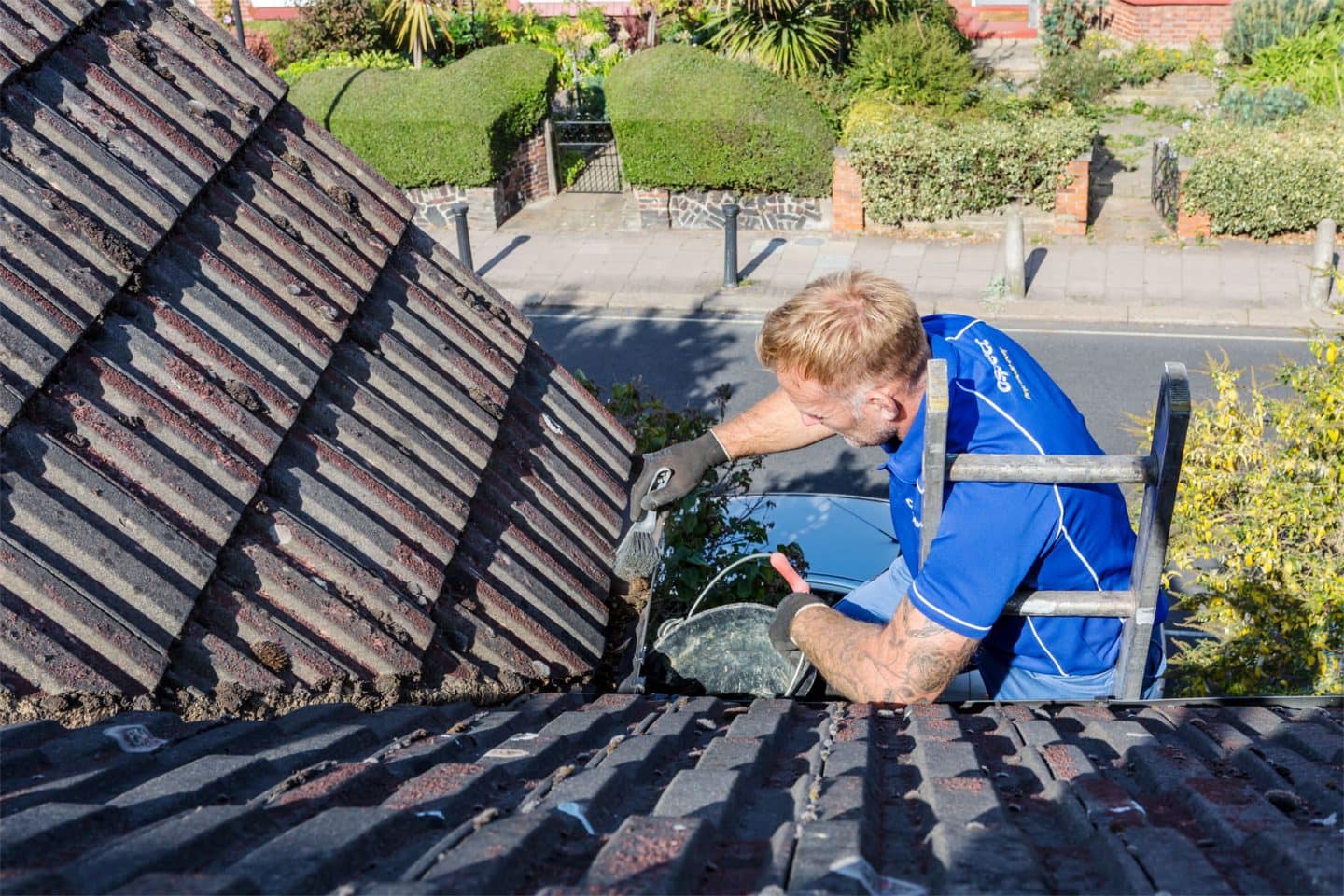
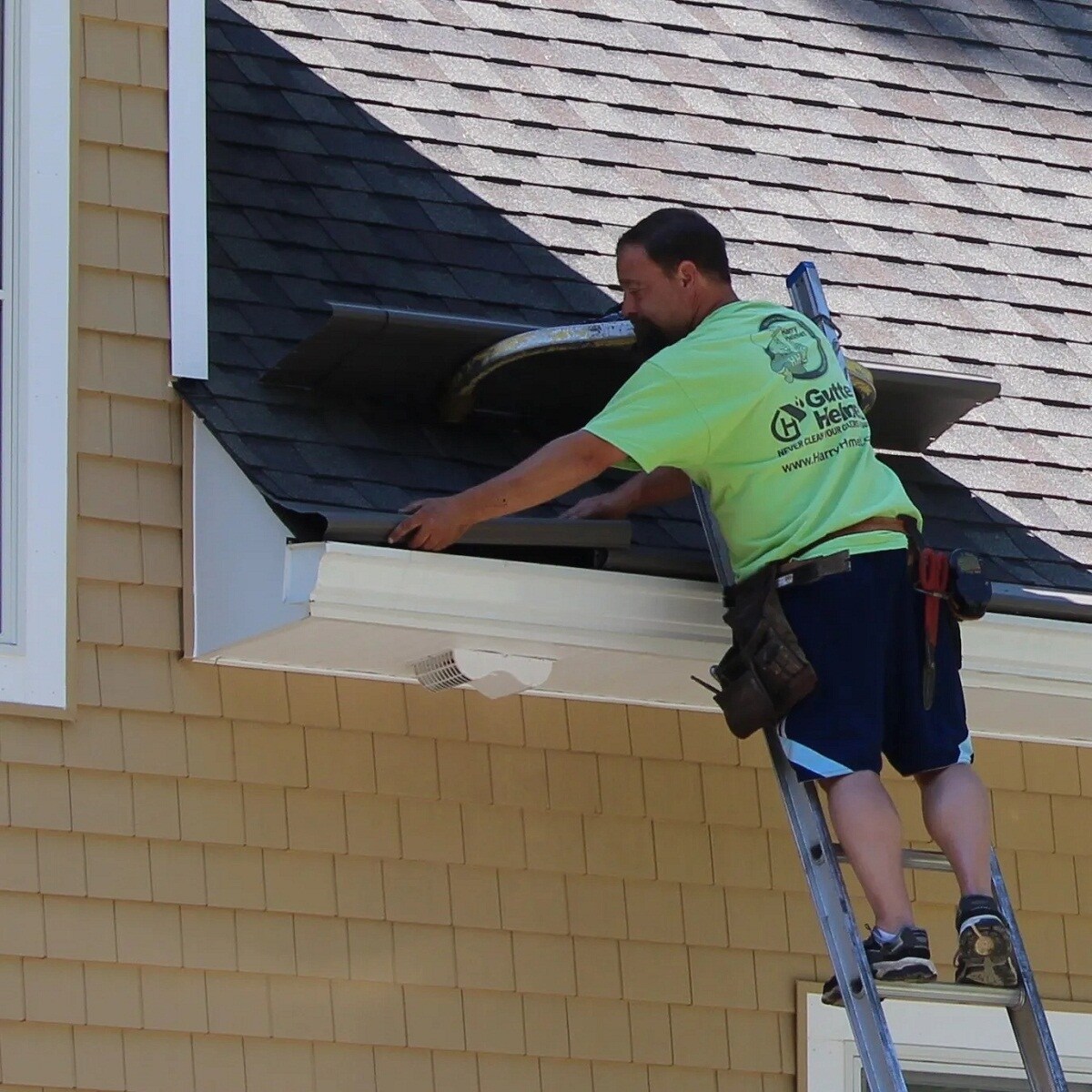
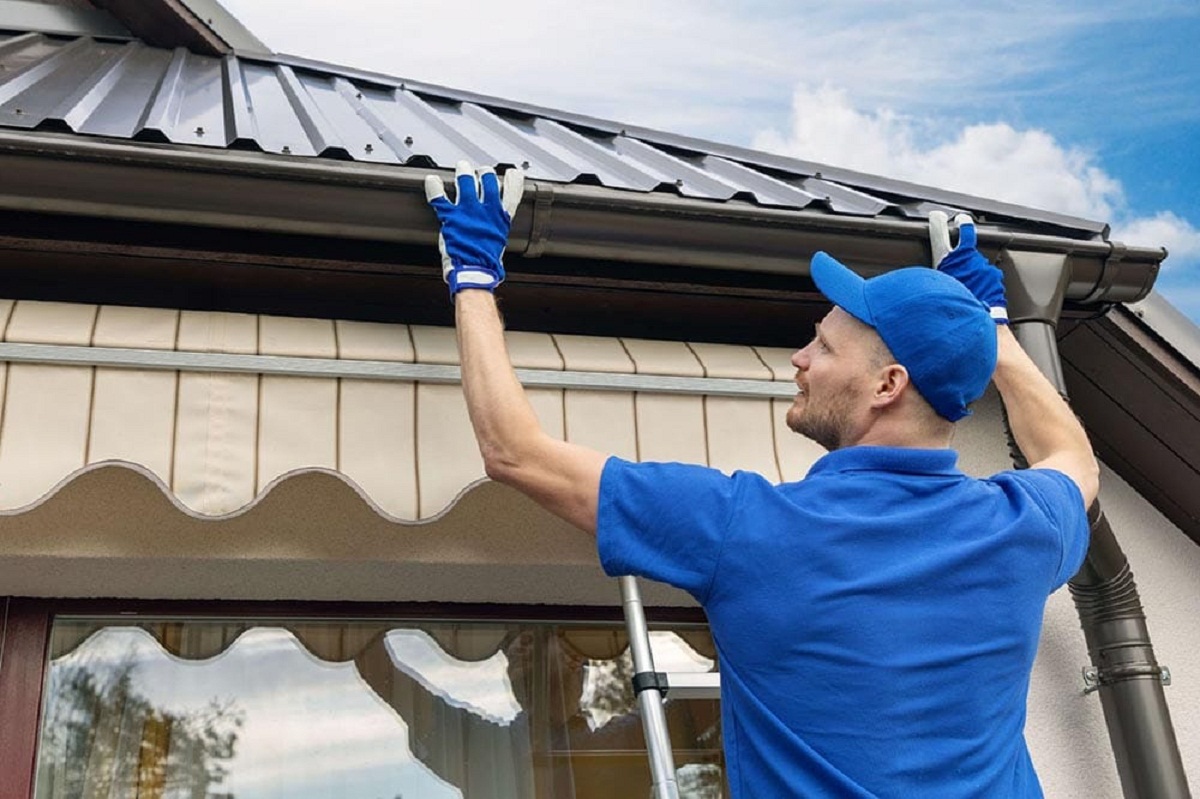
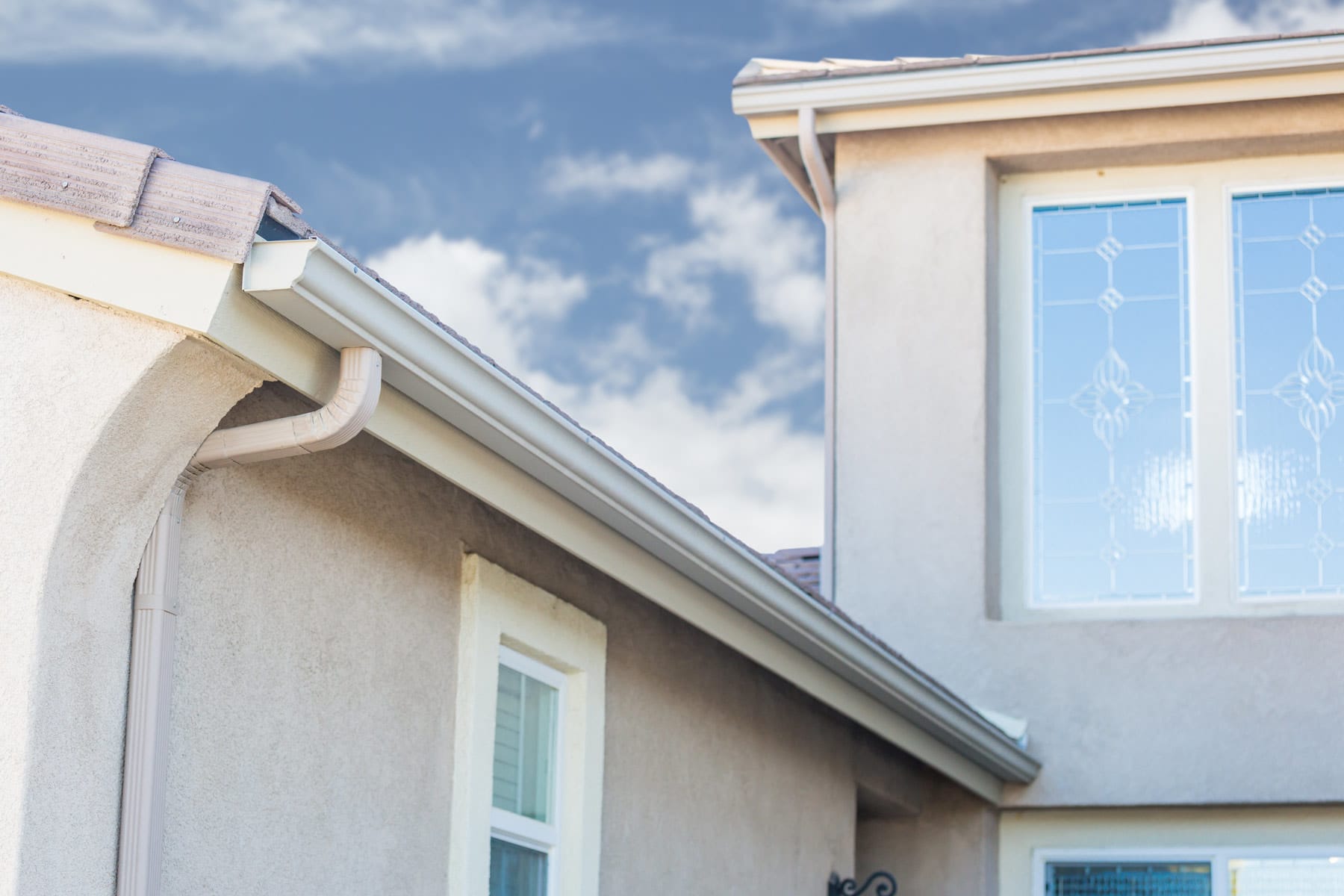
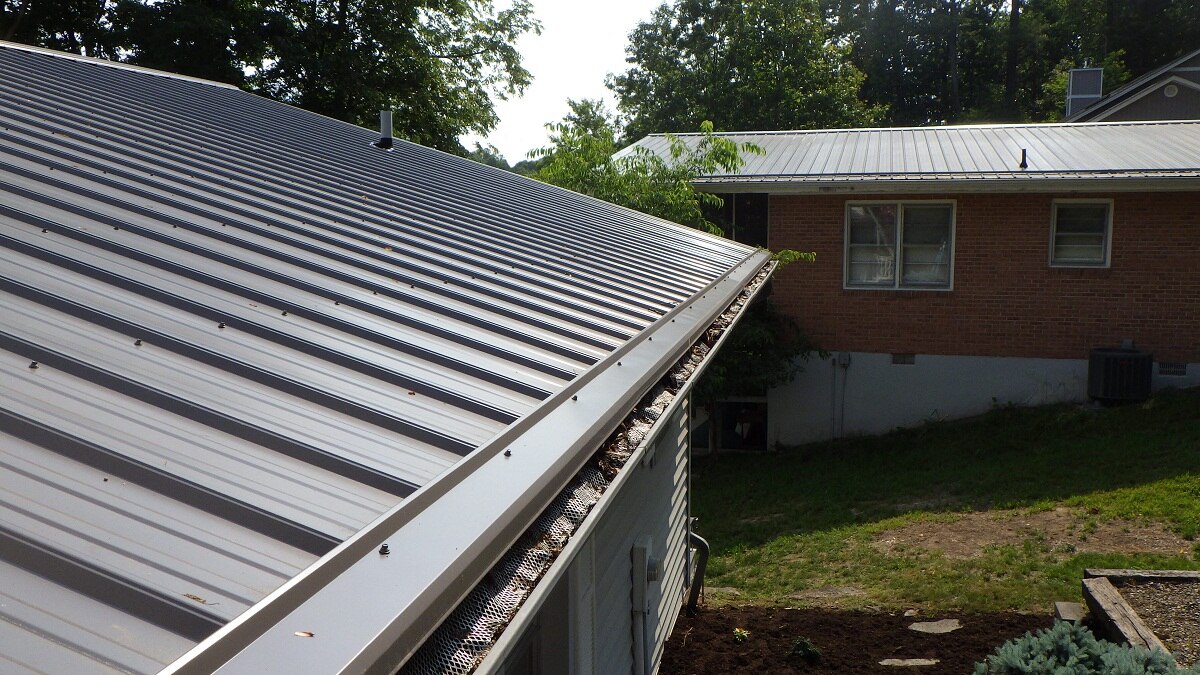
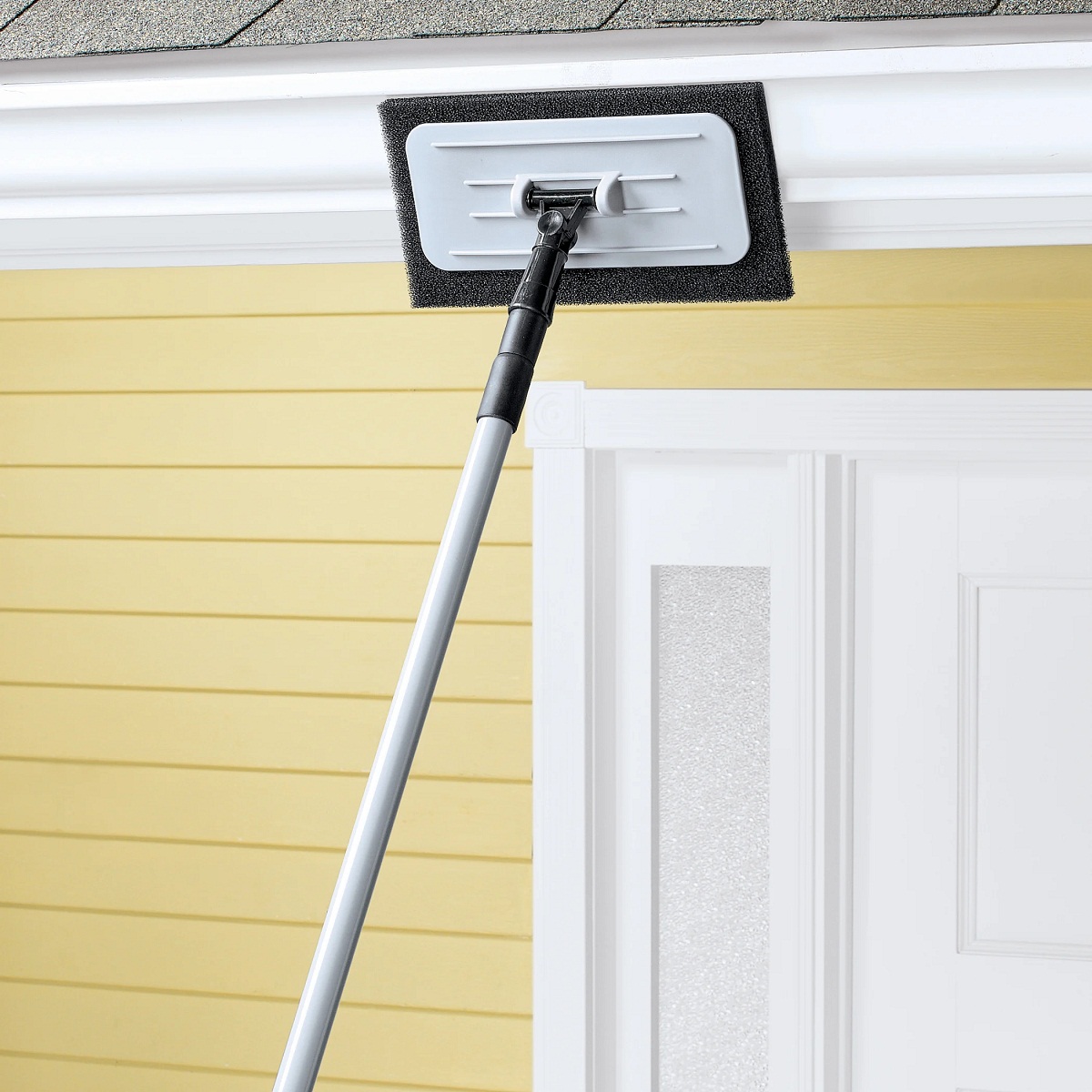
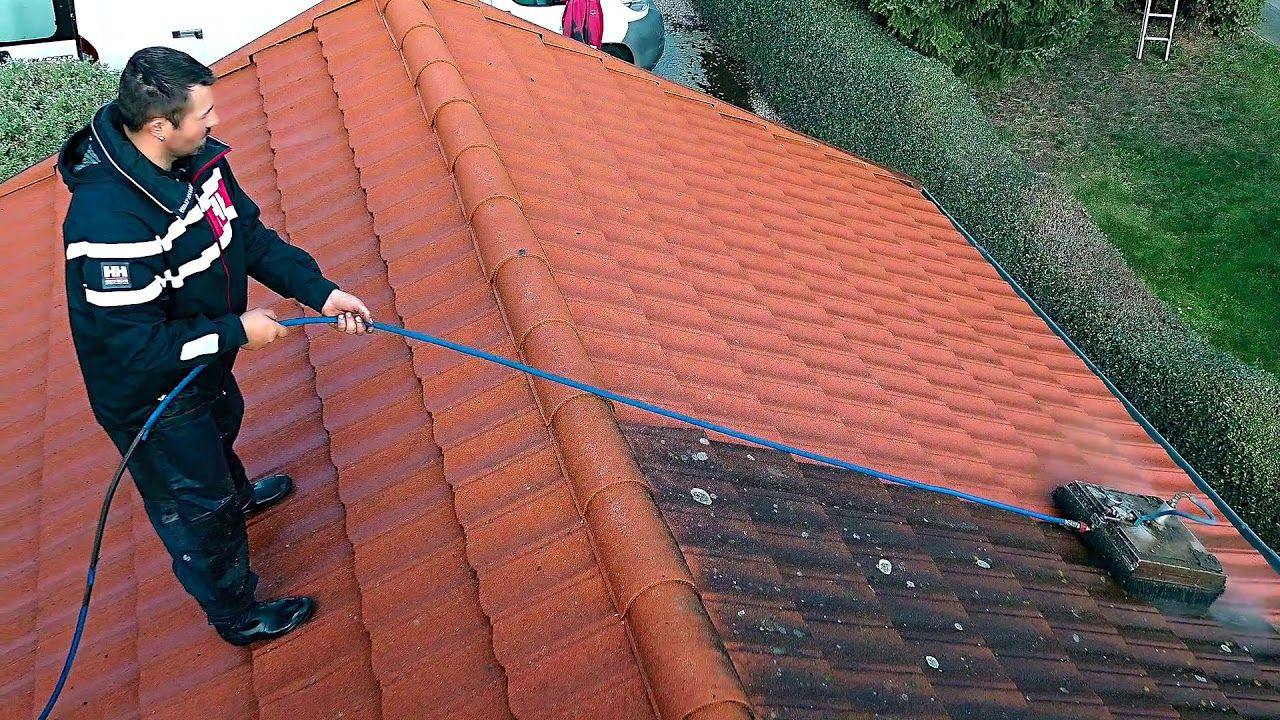
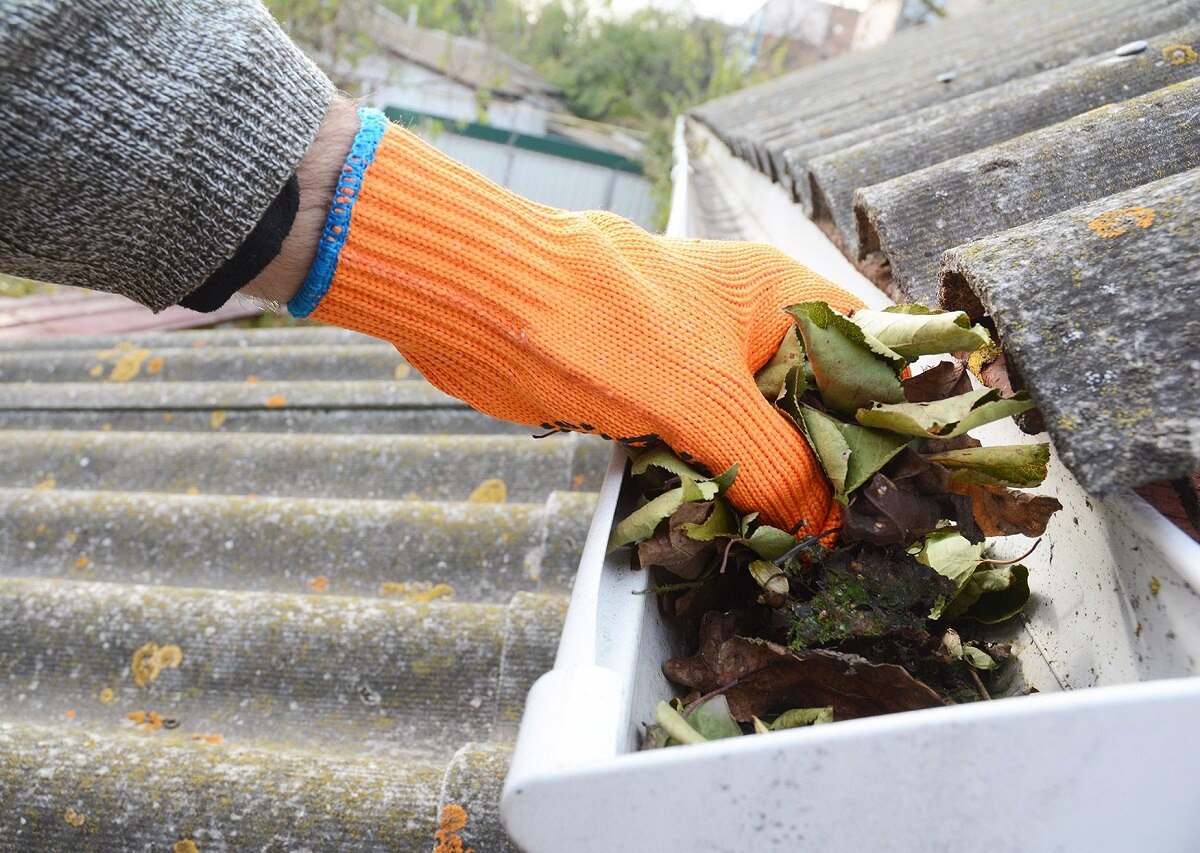
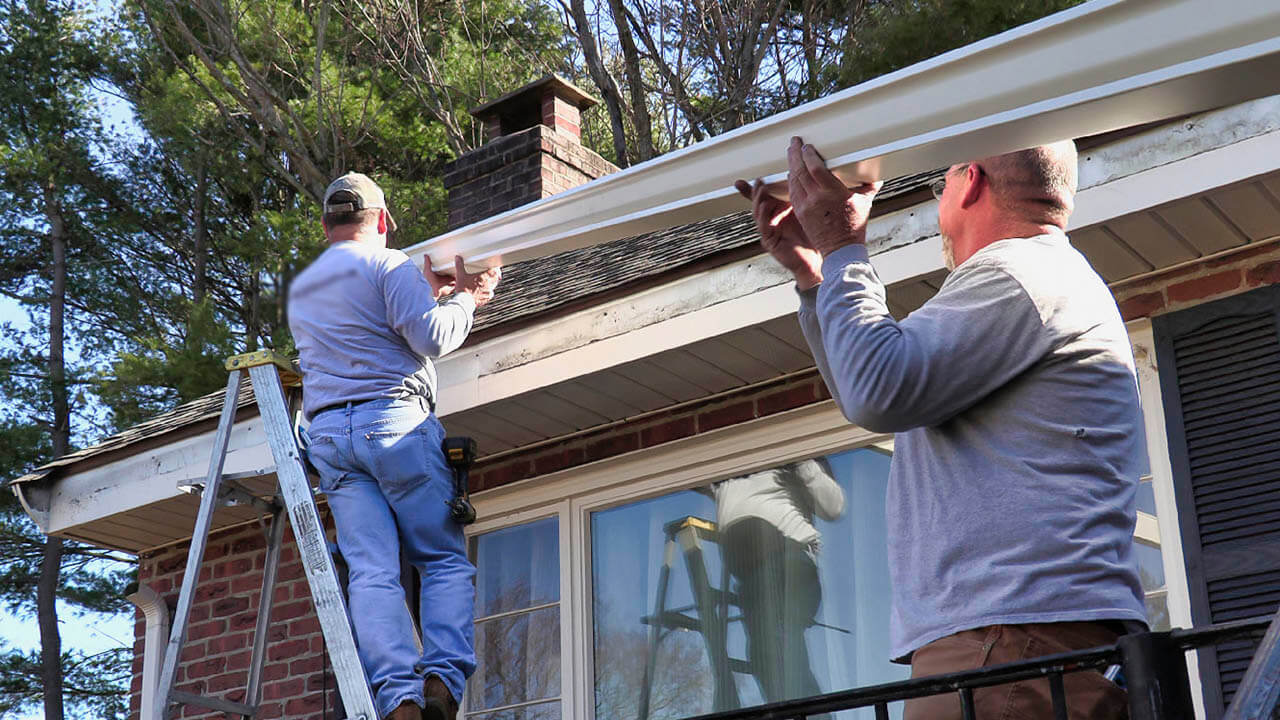
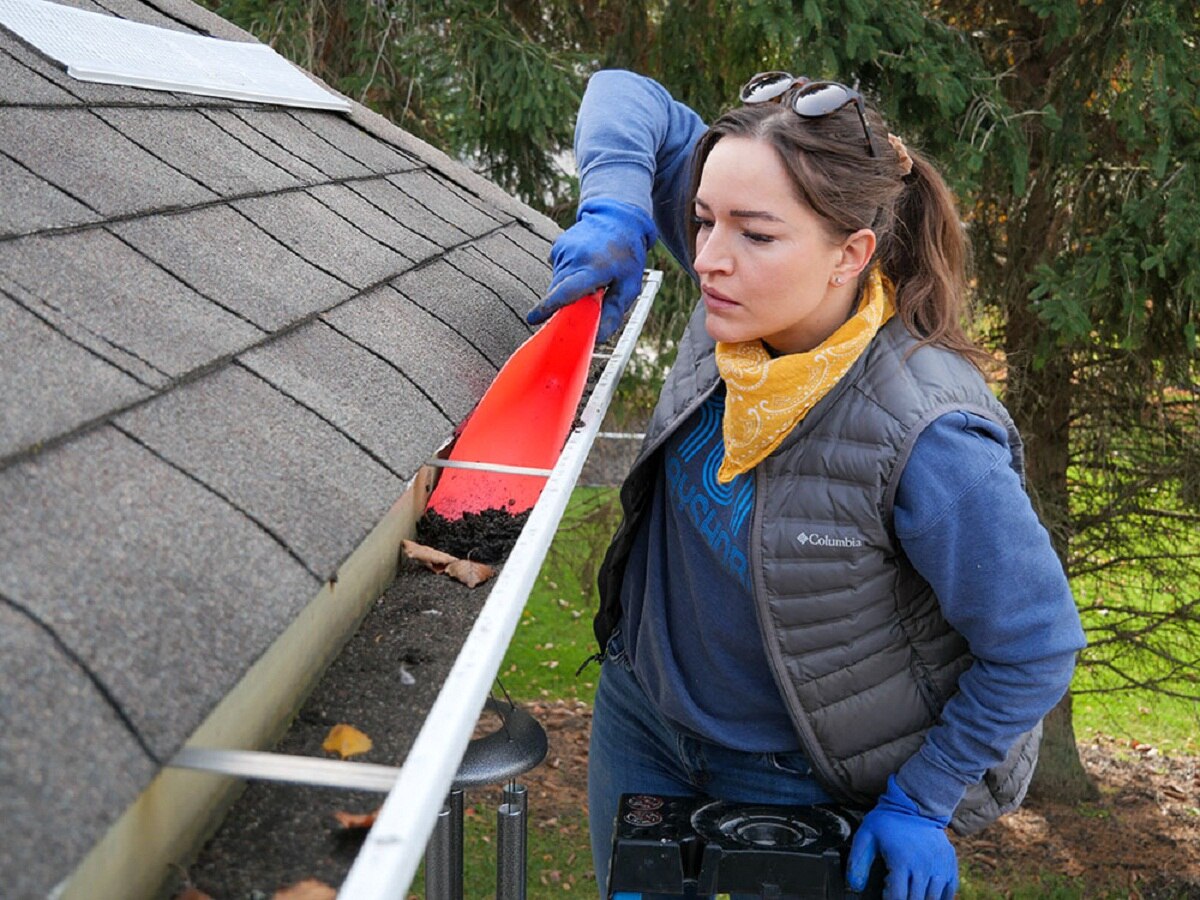
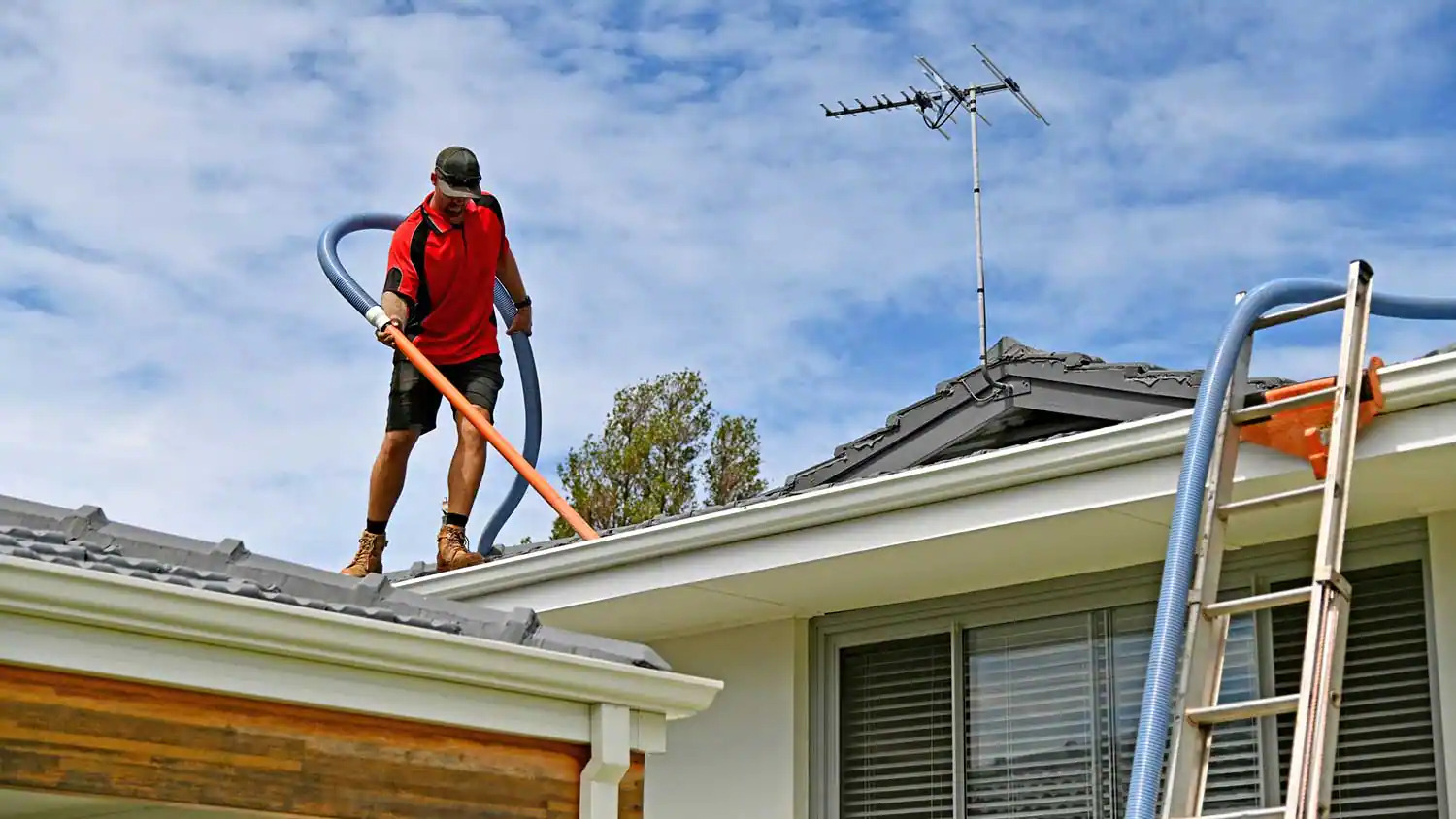
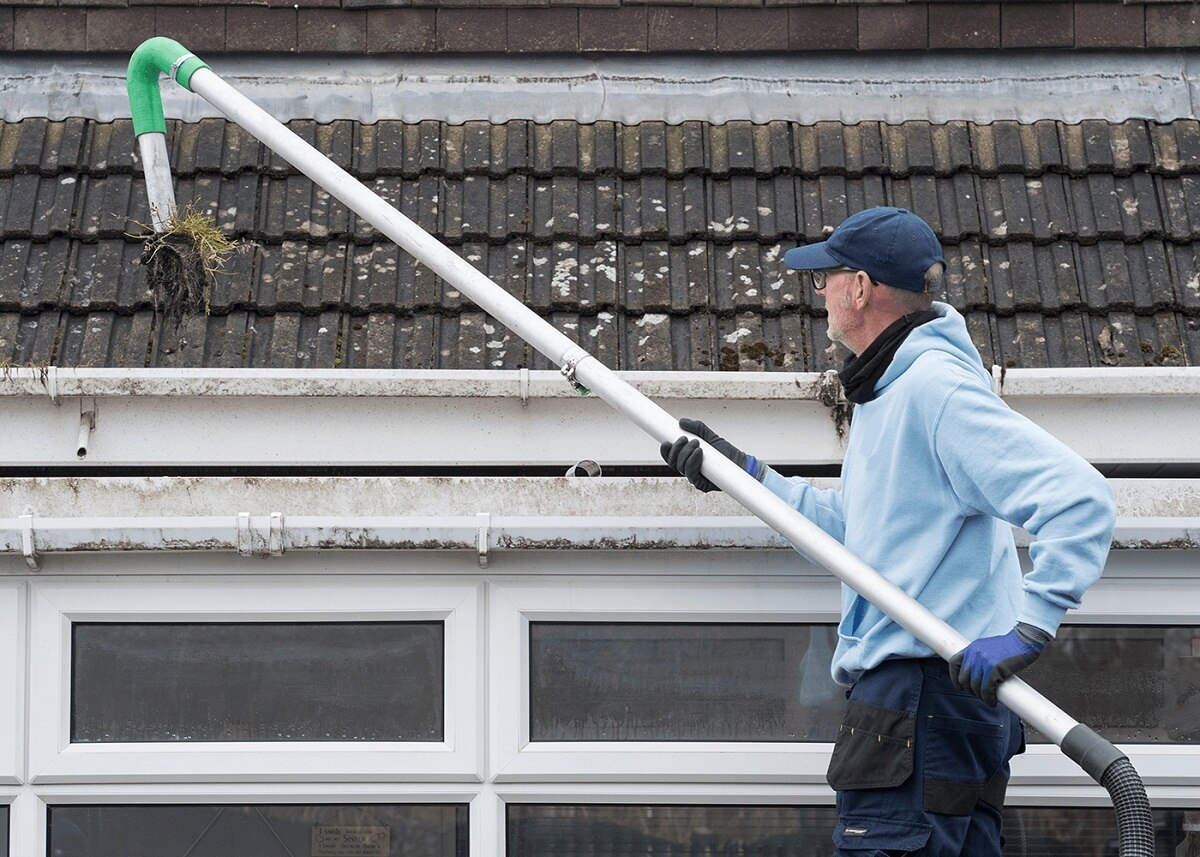
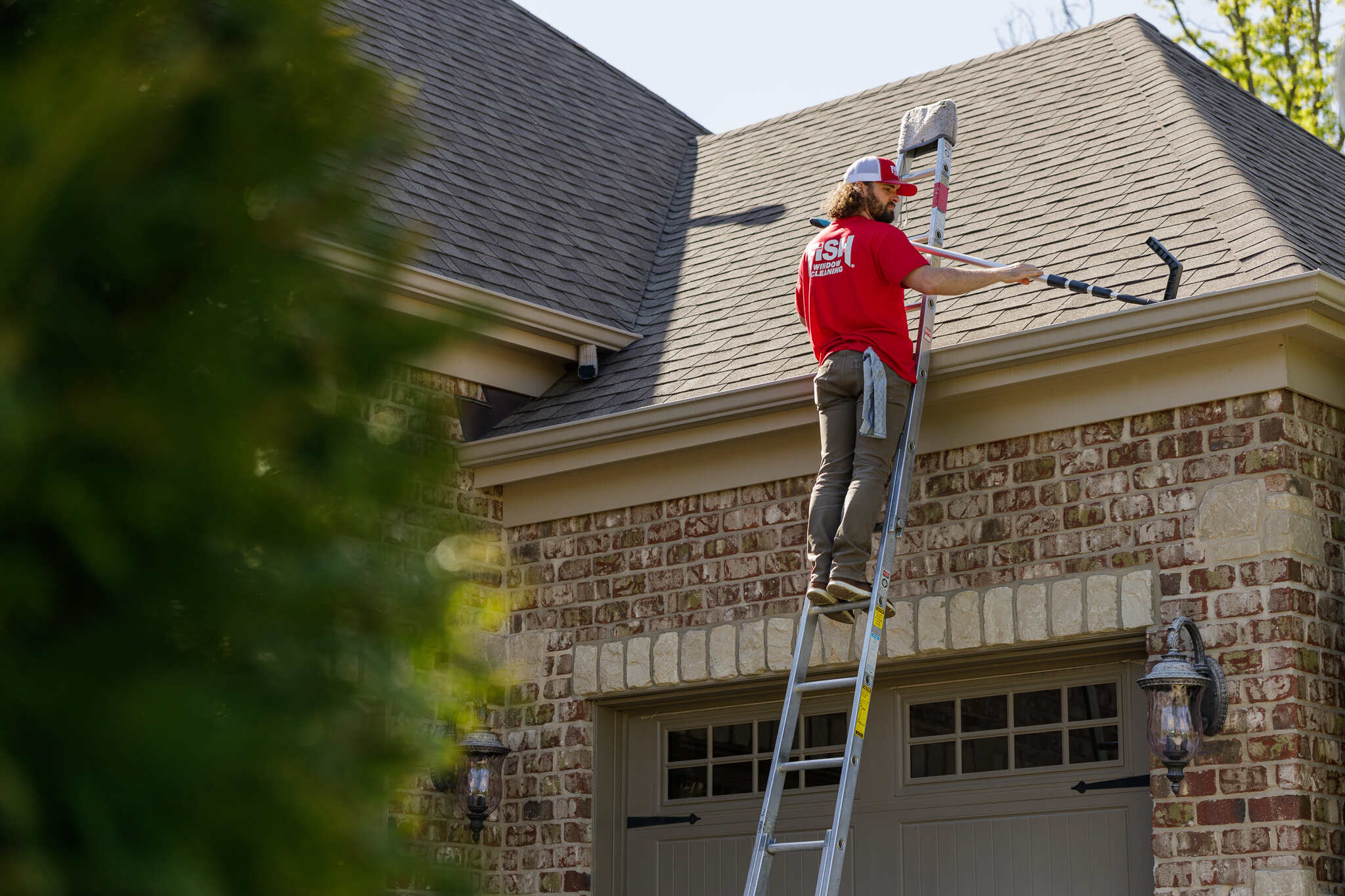

0 thoughts on “How To Clean Gutters On A Steep Roof”